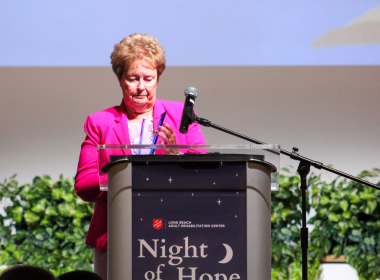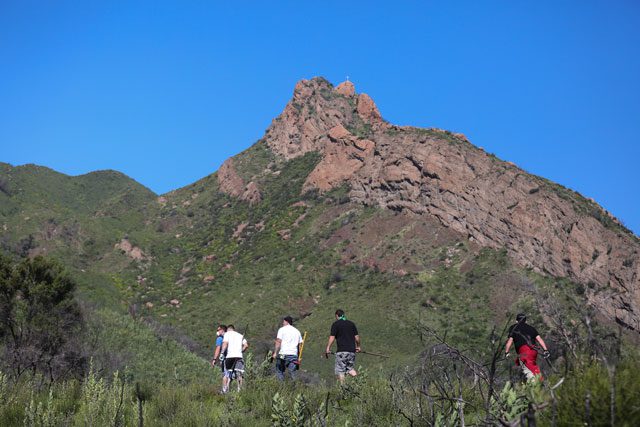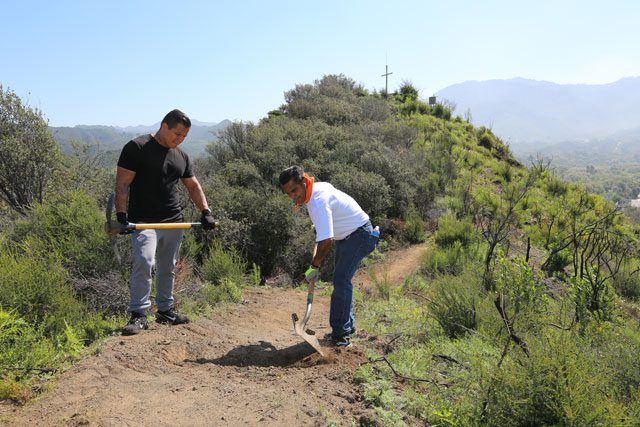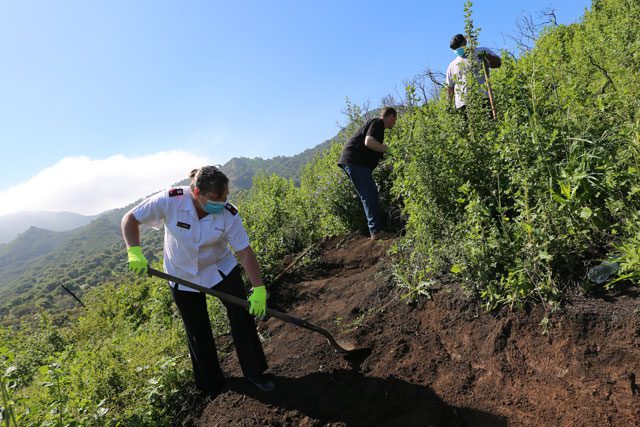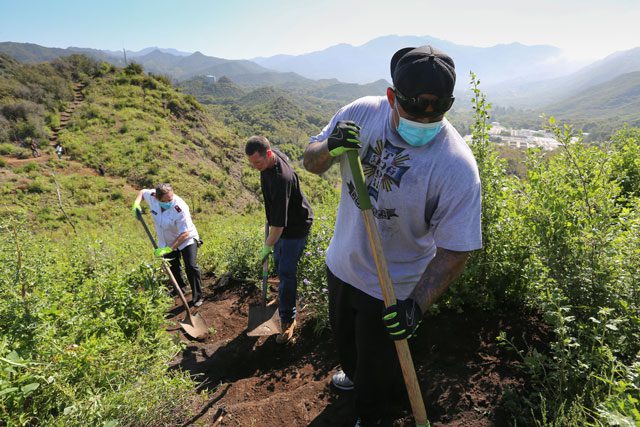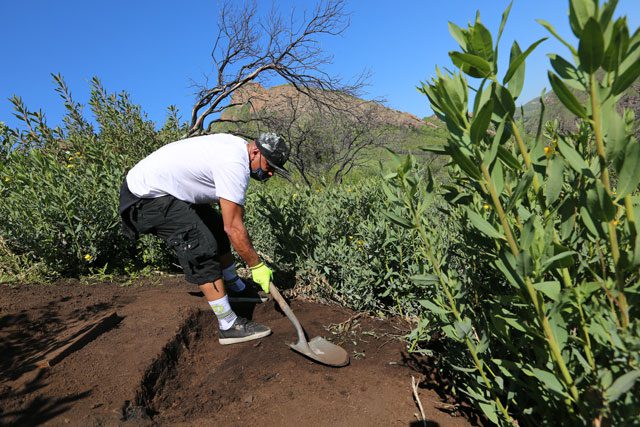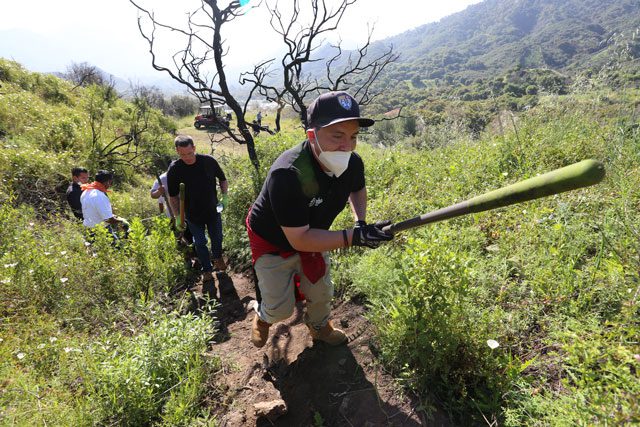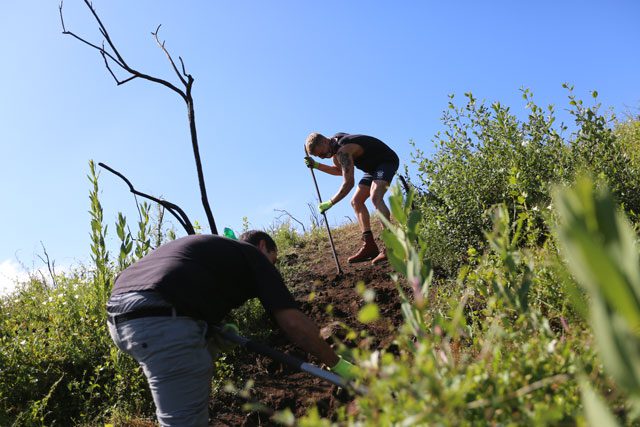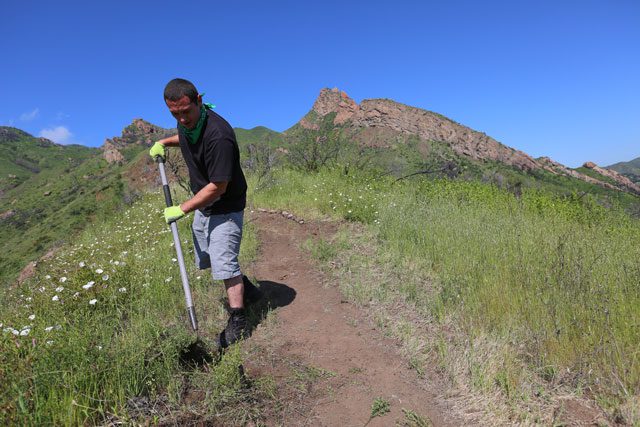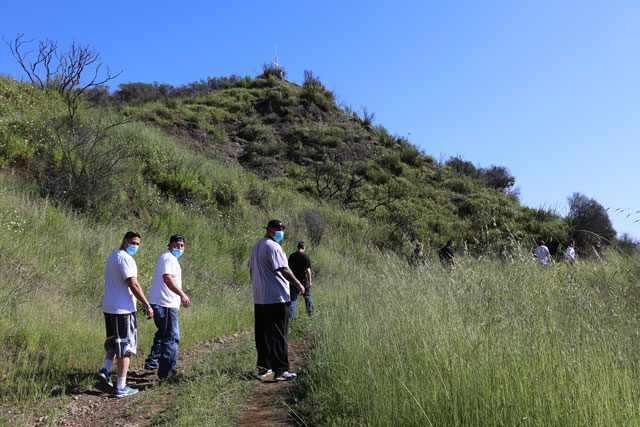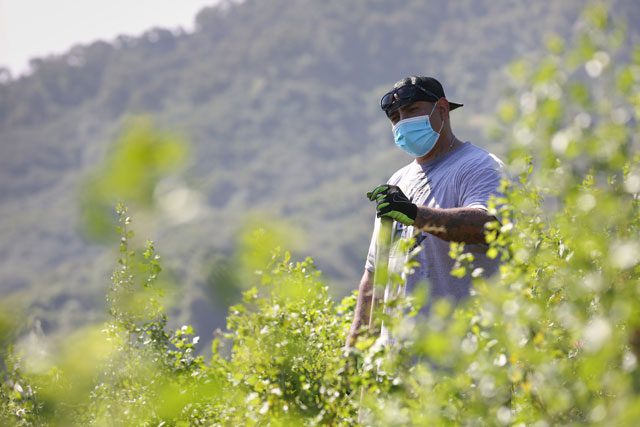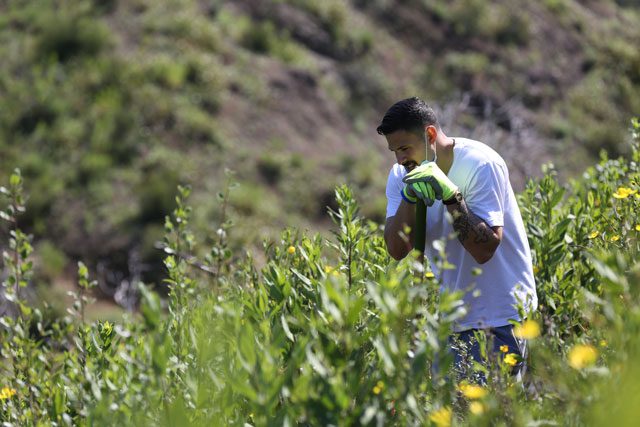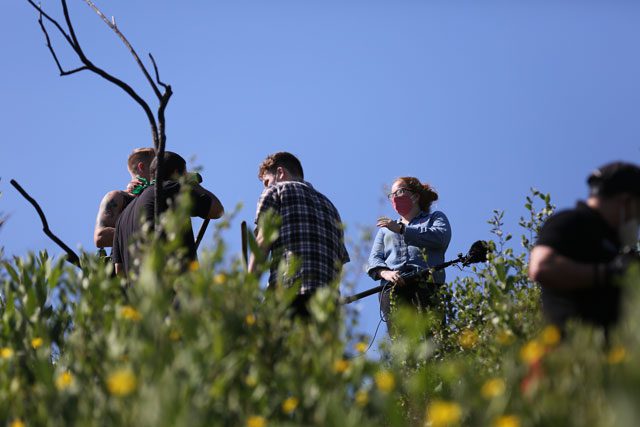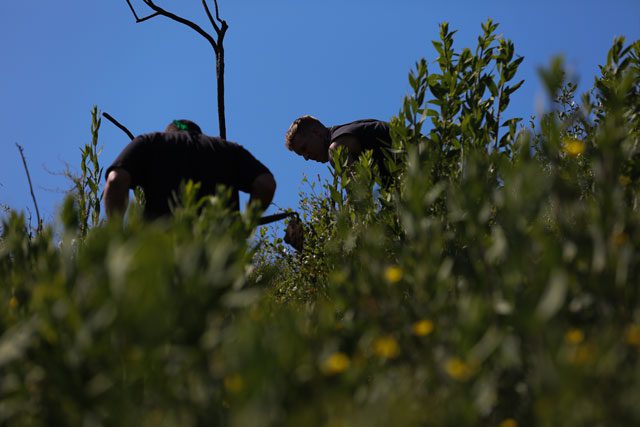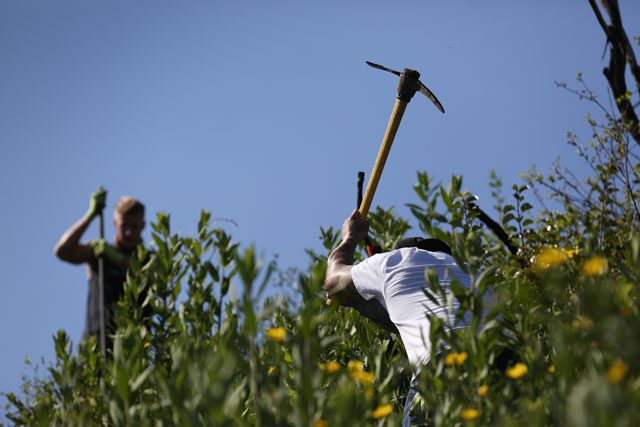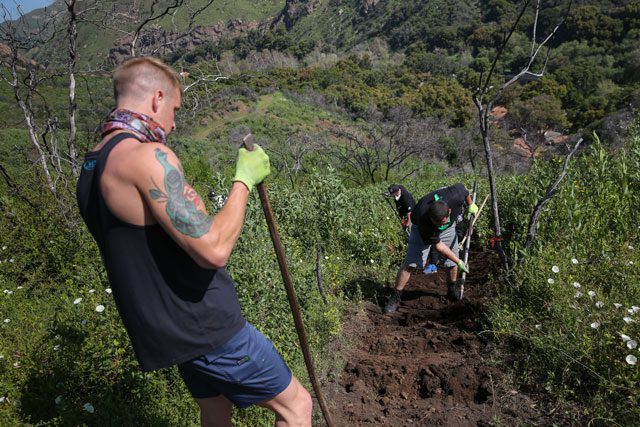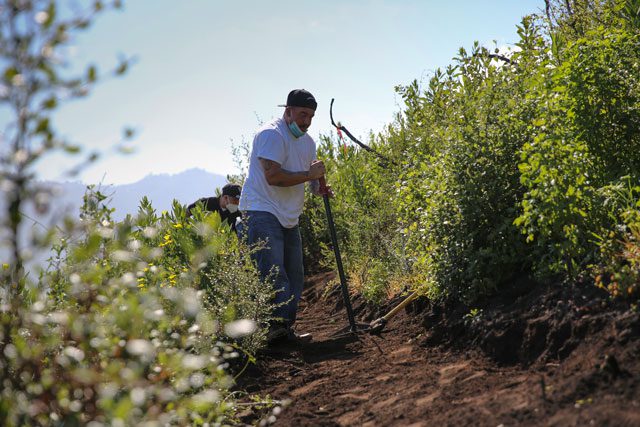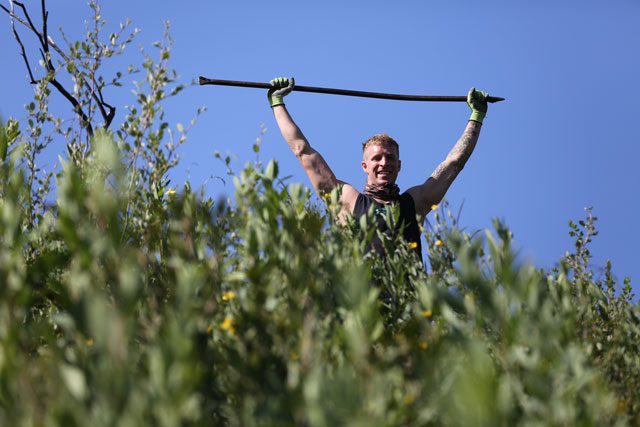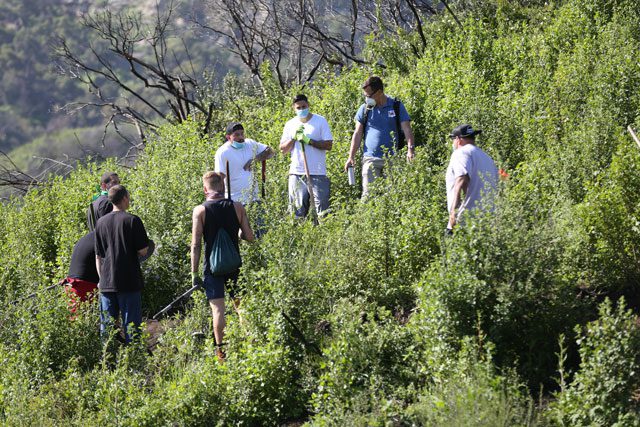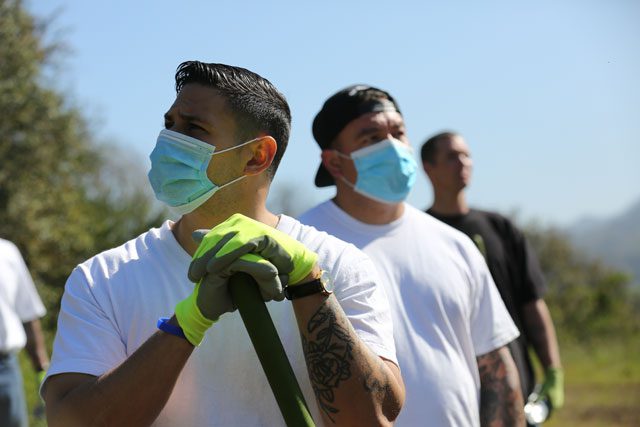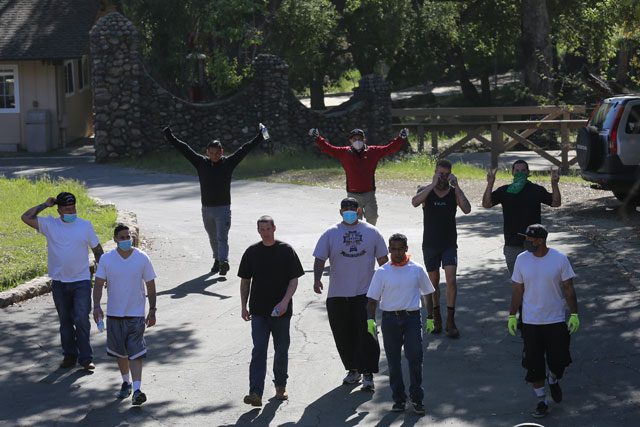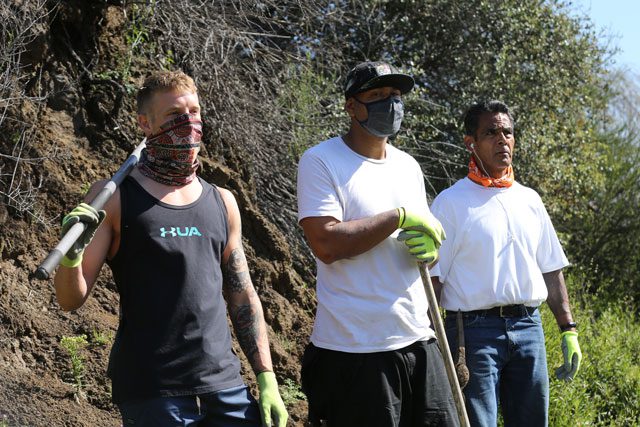By Hillary Jackson –
“It’s amazing right here,” Jason said, pausing from his work to maintain a trail at Camp Mt. Crags with other beneficiaries from the Santa Monica Adult Rehabilitation Center (ARC). Motioning to the rocky edifices topped with crosses on one side and the verdant hills to the other, he said, “God’s earth. It’s crazy.”
Below, beneficiaries chip away at the terrain with shovels and pickaxes to create stairs winding up the hill to help campers.
“One day, this is going to be used for kids, and I have kids,” Jason said. “I want to take her here, to see if she would want to go.”
The Santa Monica ARC is among the seven ARCs in Southern California traveling to camps in the California South Division for work and play during COVID-19. As the thrift stores that fund the West’s 18 ARCs are closed due to the pandemic, many of the tasks that are a part of the program’s work therapy component are not possible. Sober recreational activities, like watching sports—a popular activity at the centers—are also not possible due to canceled seasons.
California South and ARC command leaders approached Divisional Camp Director Marty Brown about hosting ARC at camp in March as the Army was developing its response to COVID-19. Brown is the first to say he loves the ARC ministry—his parents, Majors Grady and Julie Brown, recently retired after leading the ARC command.
“I thought it was an amazing idea,” Brown said. “We are part of a ministry during this time and it will certainly help benefit camp. It’s a win-win.”
Admittedly, camp staff members questioned the thought of bringing outsiders in during COVID-19, but Brown explained the ARCs have been in lockdown for many weeks and are probably safer than camp staff who have to leave their homes to get food and supplies.
To protect both the beneficiaries and camp staff, a number of safety measures have been taken, including limiting the number of beneficiaries at camp, requiring beneficiaries to wear Personal Protective Equipment (PPE), practicing social distancing and screening beneficiaries’ health before leaving for camp.
In addition to the Santa Monica ARC, groups from the Canoga Park, Long Beach and Pasadena centers have joined in the rotation at Camp Mt. Crags, and San Bernardino, Riverside and Bakersfield centers have been scheduled at Camp Pine Summit in Big Bear, California. Brown said the camps average three ARC groups a week at each location.
Traditionally, the camps receive a number of volunteer groups, Brown said, and one of the camp’s go-to tasks for groups is trail maintenance, along with deep cleaning. Many work projects cost money, and since the 2020 camp season is canceled along with off-season conferences that bring in income, the groups have been accomplishing low-budget projects.
“When the Woolsey fire hit, right away I said we have a great opportunity we might never have again to get trails going while there is no brush,” Brown said. “The trail they are doing has always been there, but it was not fun…It was a really hard one to do.”
The ARC groups have worked to clear what the camp calls “the chairs trail” and add in steps. Brown recently took three of his older children to try it out.
“I can’t tell you how blown away I was,” Brown said. “It’s a somewhat easy, walkable trail now. We can have our younger campers do it. It will provide them the opportunity to do a high hike, but it’s not that tough, because they put in so many switchbacks.”
After the beneficiaries put in a couple hours of work, they eat lunch before enjoying recreation at Camp Mt. Crags. Hiking, laying in the creek and playing sports are popular choices. For those who go to Pine Summit, the trip usually involves an overnight stay.
For the Santa Monica ARC, the center’s outdoor space is limited to a pair of picnic tables due to its location. Santa Monica ARC Administrator for Program Lt. Tanya Pemberton was quick to set a standing appointment at camp. The weekly trip has been key to maintaining well being.
“They love it,” Pemberton said. “They love to work out, and they want to help the kids and they know that this is helping the camps, so that they can have kids here safely on the trails…I like to bring them out here so they can see what The Salvation Army camp is. So when they go home to their kids, they’ll be like, ‘kids, you have to go.’”
Canoga Park ARC Administrator for Business Major John Desplancke has also received positive feedback from the beneficiaries at the Canoga Park ARC, and he hopes to make the trek to camp a weekly outing. Desplancke said most of the beneficiaries don’t know about what camp does, but once they learn about the mission, they are all in.
“As I was working on the mountainside with two other beneficiaries, they were amazed at the ministry and service that the camp gives to young people,” Desplancke said. “I had the chance to share my story of how working at the camp changed my life. It’s also the place where I met my wife for the first time almost 37 years ago.”
While California South’s camps were the first to partner with ARCs during COVID-19, Brown is part of a task force and sent guidelines to camp directors in the Hawaiian and Pacific Islands and Del Oro divisions with the details involved with orchestrating these partnerships.
Since then, Camp Homelani and Camp Del Oro have had groups visit from the ARC and Adult Rehabilitation Program (ARP), a divison-run addiction rehabilitation program, respectively. Men from the Honolulu ARC have started to visit Camp Homelani for service and recreation in groups of six. Women from the Chico ARP spent a few days at camp Del Oro one week, performing deep cleaning projects and getting some time outside before trading with the men’s program the following week.
HOW TO HELP:
- If you’d like to make a monetary donation, please click here to make a gift.
- Text ‘GIVE’ to 52000 to make a $10 donation to The Salvation Army. This will automatically add a one-time donation to your next mobile phone bill.
- For information about volunteering, please visit volunteer.usawest.org.
- To learn more about how to support The Salvation Army’s relief efforts, please click here.


